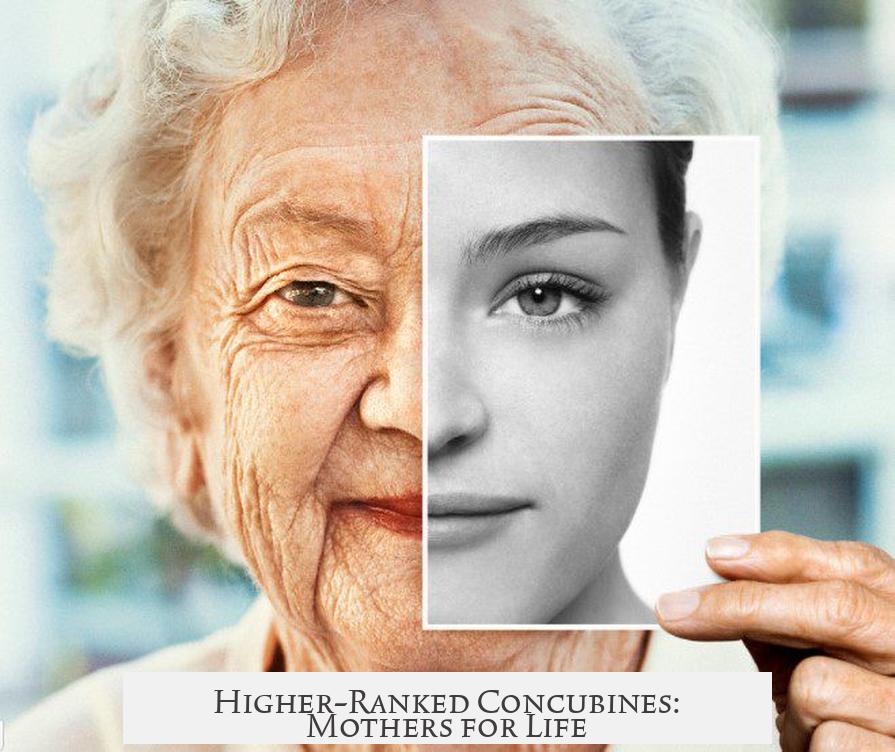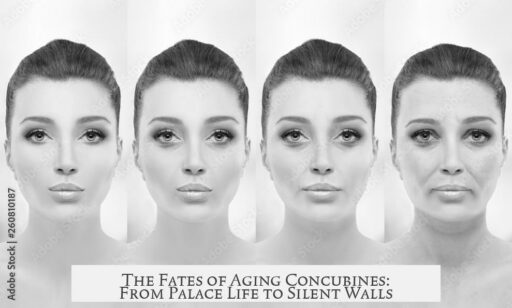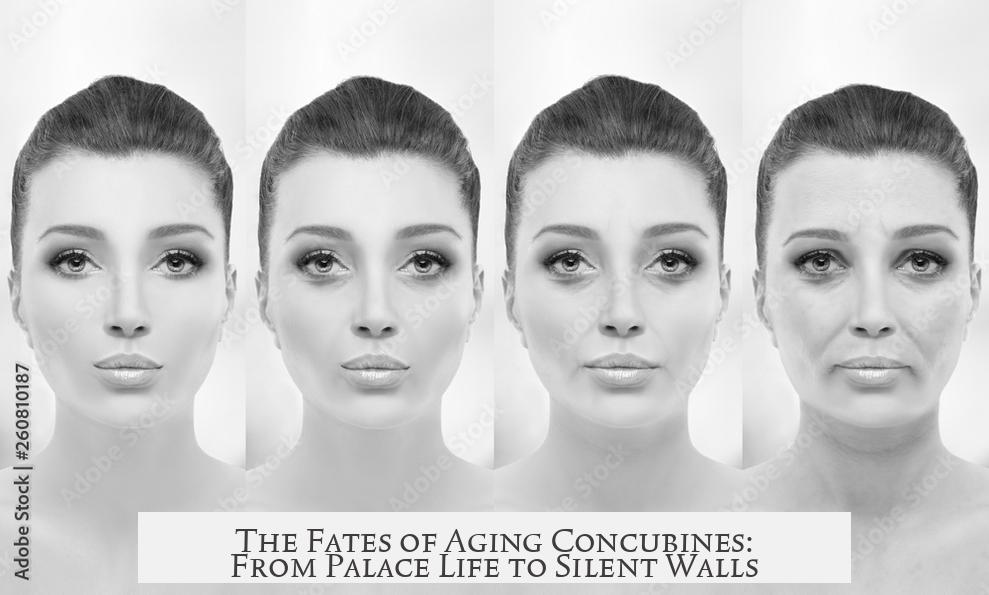As concubines aged, their roles and lifestyles changed significantly, often depending on their rank and personal circumstances within the palace hierarchy.
Lower-ranked concubines faced limited options. Many retired into religious life by becoming Buddhist nuns, living out their later years in monasteries. This path offered a quiet refuge from palace life. Others remained inside the palace but took on less visible duties, continuing to serve in roles hidden from the public eye. These options helped alleviate their isolation while preserving some status within the court.
Childless widows of emperors encountered a particularly constrained fate. They were often expected to enter convents after the emperor’s death, dedicating themselves to religious practices until their end. Alternatively, some were compelled or chose to be buried alongside the deceased emperor, a practice reflecting loyalty or palace customs.
The environment of the harem itself was isolating. Concubines lived behind closed walls, rarely leaving the compound. Their interactions were mainly limited to the emperor, palace eunuchs, and fellow concubines. This isolation shaped their daily existence from youth through old age.
High-ranking concubines, known as consorts, held more influential roles that sometimes extended beyond their reproductive years. Their primary function evolved into supporting the emperor through motherhood, especially by raising imperial children. This role maintained their status and influence within the court even after they were no longer fertile.
| Concubine Status | Post-Ageing Options |
|---|---|
| Lower-ranked | Retire as Buddhist nuns or work hidden in the palace |
| Childless Widows | Enter convents or be buried with the emperor |
| Higher-ranked Consorts | Continue influence as mothers beyond fertile years |
- Lower-ranked concubines retire to religious life or unseen palace roles.
- Childless widows often enter convents or face burial with the emperor.
- Life in the harem is mainly isolated, with limited contacts.
- High-ranking consorts remain influential as mothers past fertility.
What Happened to Concubines as They Aged? The Untold Journey Behind Palace Walls

Concubines didn’t just vanish once their youth faded; their later lives varied widely based on rank, fertility, and circumstance. Aging in the palace harem was no fairytale. It was often a complex mix of seclusion, shifting roles, and limited options.
So, what really happened to these women when the charm of youth dimmed? Let’s explore the layers from forgotten low ranks to influential mothers.
The Quiet Fates of Lower-Ranked Concubines
Not all concubines basked in royal favor. The lower ranks? They had a much tougher endgame. Most were the anonymous pages in history, often overlooked. Their options shrank with age.
Many retired into religious life. Becoming Buddhist nuns offered a dignified refuge. It was a way out of the suffocating palace life, trading silk robes for simple robes of monkhood.
Others stayed behind but shifted roles to palace work — an invisible workforce hidden from public view. Imagine being swept into palace chores and administrative work, trapped inside the same walls but now as mere servants instead of companions.
Childless Widows: Between Convent and Tomb
Then we have the childless widows. A unique category burdened by more restrictions after the Emperor’s death.
Without children, especially sons, these widows had fewer anchors within the palace. Social norms and palace protocols often nudged them toward religious retirement. The convent was a place for reflection—and an exit from palace intrigues.
Some, unfortunately, ended up buried with the Emperor. Either by choice or force, this practice symbolized a lifelong bond, albeit a final one beneath the earth.
“Why bury a concubine with the Emperor? Because in the end, palace politics weren’t just about life but death too.”
Life in the Harem: The Silent Walls
Concubiners’ lives unfolded mostly behind closed doors. Picture a high-security zone where only a few interacted: the Emperor, eunuchs, and fellow concubines. Freedom was a distant dream.
Ageing didn’t open those doors wider. Instead, older concubines often faced deeper isolation. The harem was their world, locked and limited.
With scarce opportunities to leave, aging concubines had to navigate power plays inside these walls, battling invisibility and obscurity.
Higher-Ranked Concubines: Mothers for Life

Now, the story changes for the cream of the crop — those who bore sons or had high status.
Age for these consorts didn’t mean retirement or obscurity. They stepped into new roles as mothers, a status that extended their influence.
Their power and meaning evolved from beauty and fertility to maternal wisdom and political clout. Being a mother, especially to princes, meant continued respect and involvement in palace affairs.
These women played a key role in securing their children’s futures and guiding palace politics long after the glamour faded.
Why Does This Matter Today?
Understanding what happened to concubines as they aged reveals much about gender, power, and society in historic royal courts.
It challenges the romanticized view of concubines as mere beauties. These women had layered, often difficult lives shaped by strict hierarchy and social expectations.
By telling their stories, we glimpse the human experiences behind the grand palaces and ornate robes.
In Conclusion: Aging Concubines Were Not Forgotten, Just Recast
To wrap up, here’s a quick snapshot:
- Lower-ranked concubines retired as Buddhist nuns or palace workers, fading into quieter lives.
- Childless widows faced convent life or burial with the Emperor, reflecting harsh realities of palace customs.
- Older concubines often endured seclusion, locked within the harem’s invisible walls.
- Higher-ranked consorts transformed into matriarchs, wielding influence through motherhood.
These pathways show aging as a social journey, shaped by power and expectations.
Ever wonder—if you’d been in a palace harem centuries ago, what fate would aging have dealt you? It’s not just history; it’s a story about resilience and roles beyond youth and beauty.




